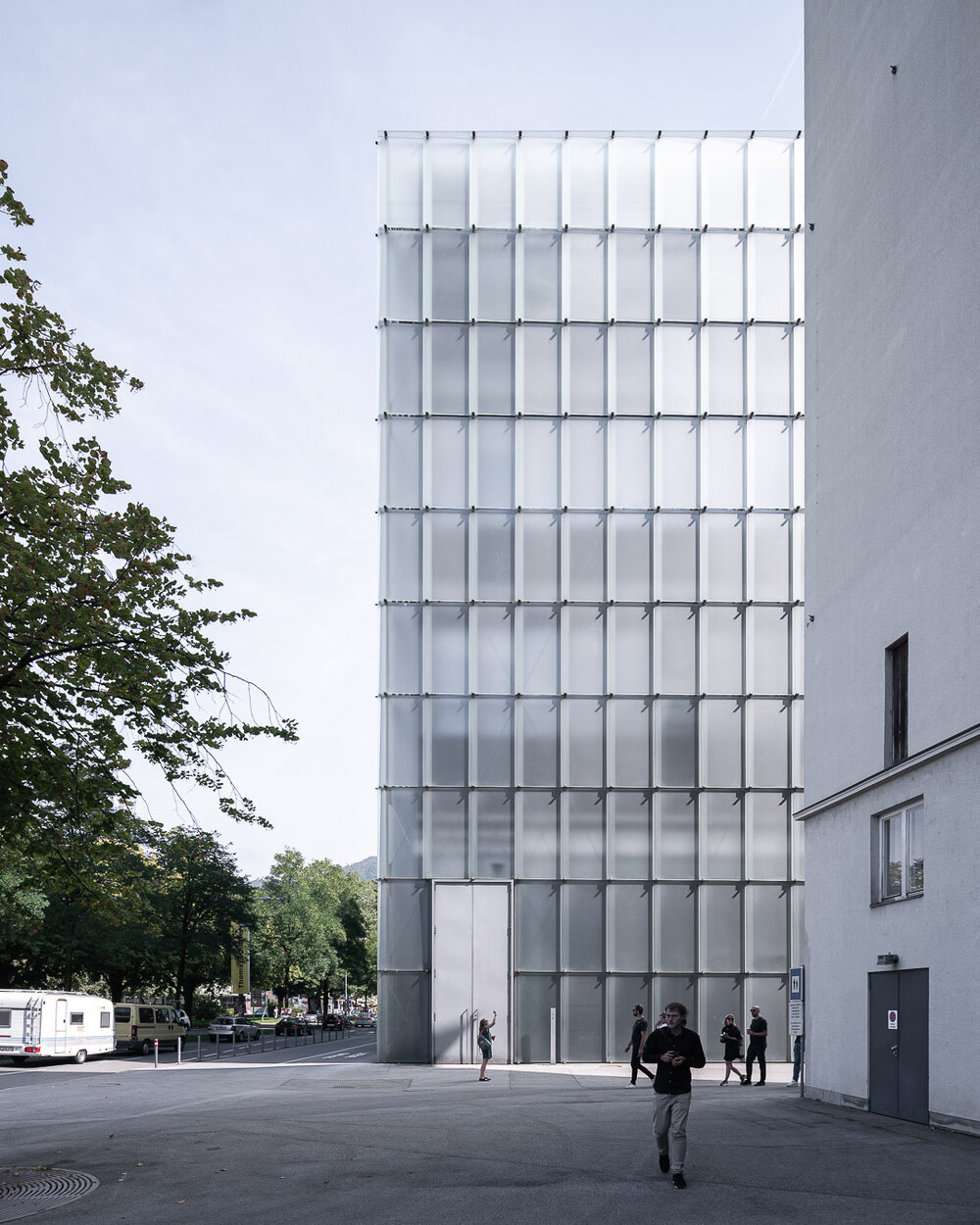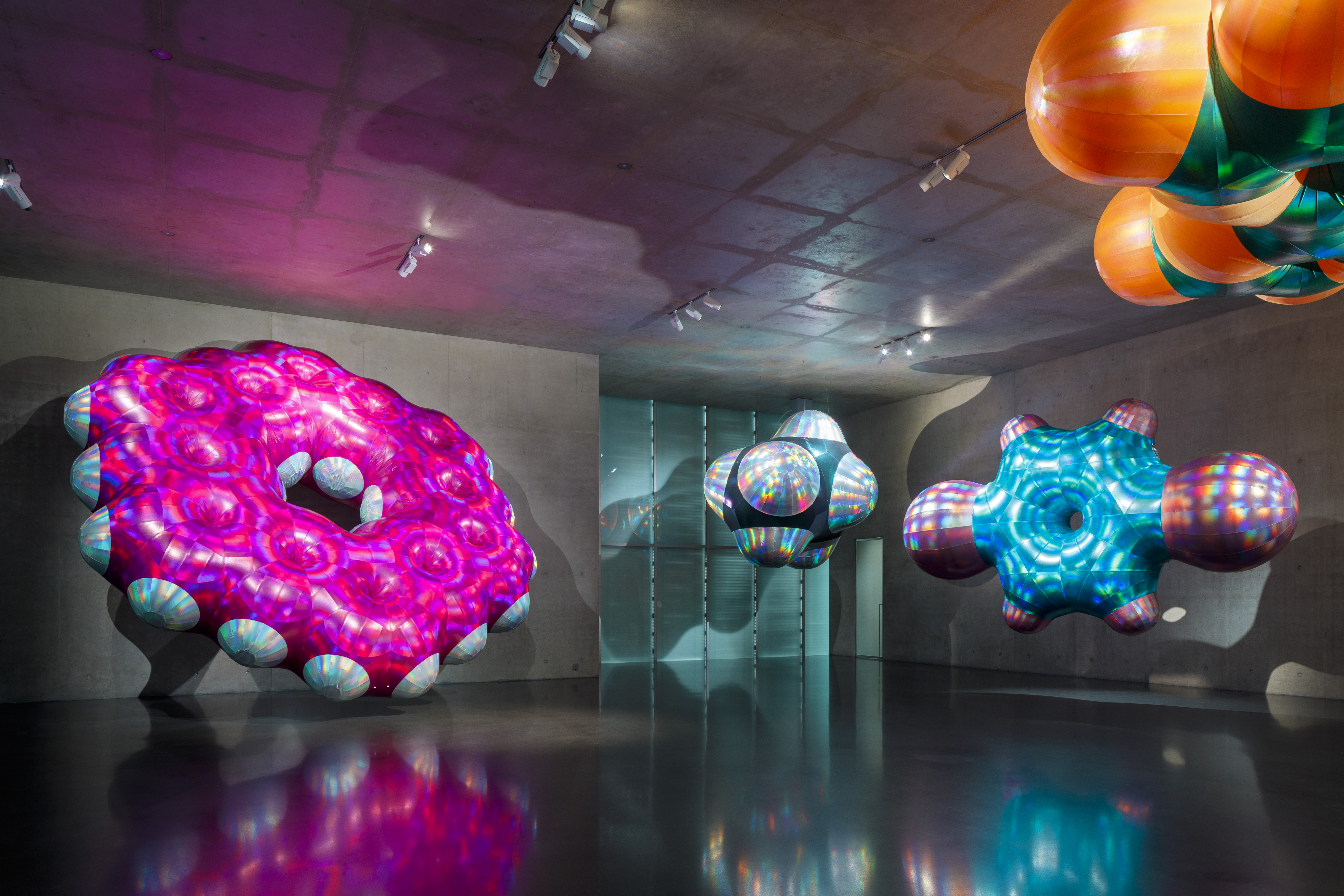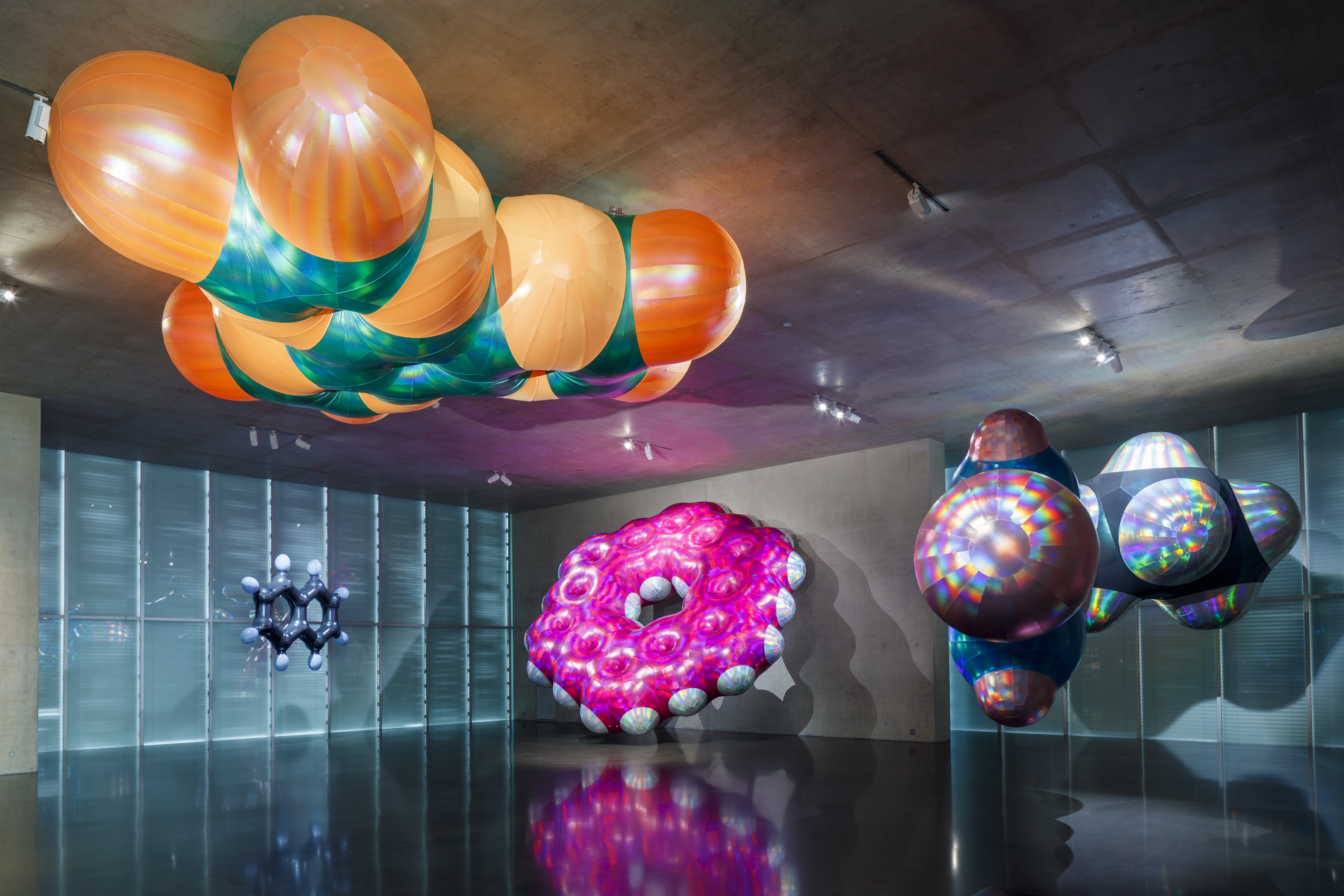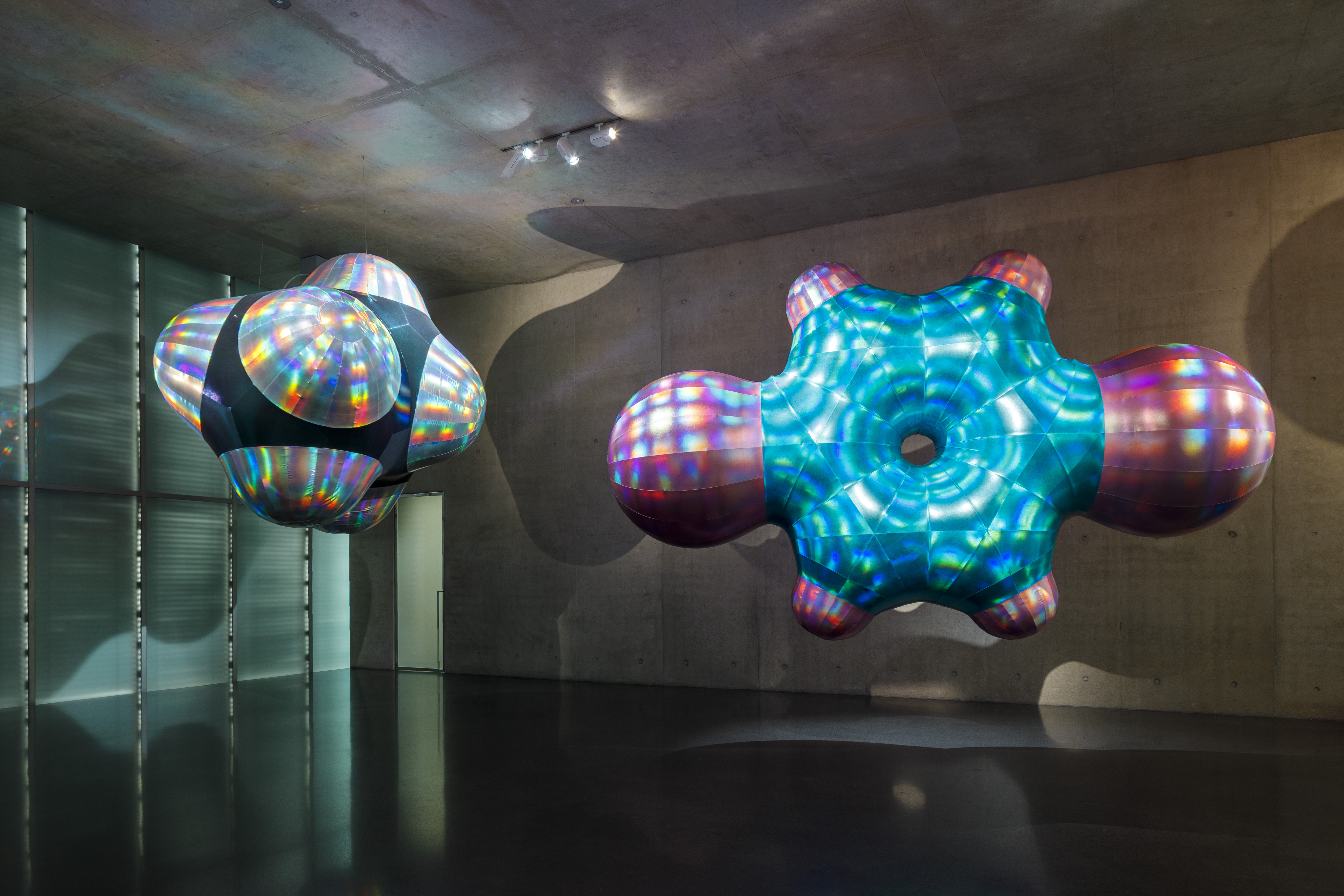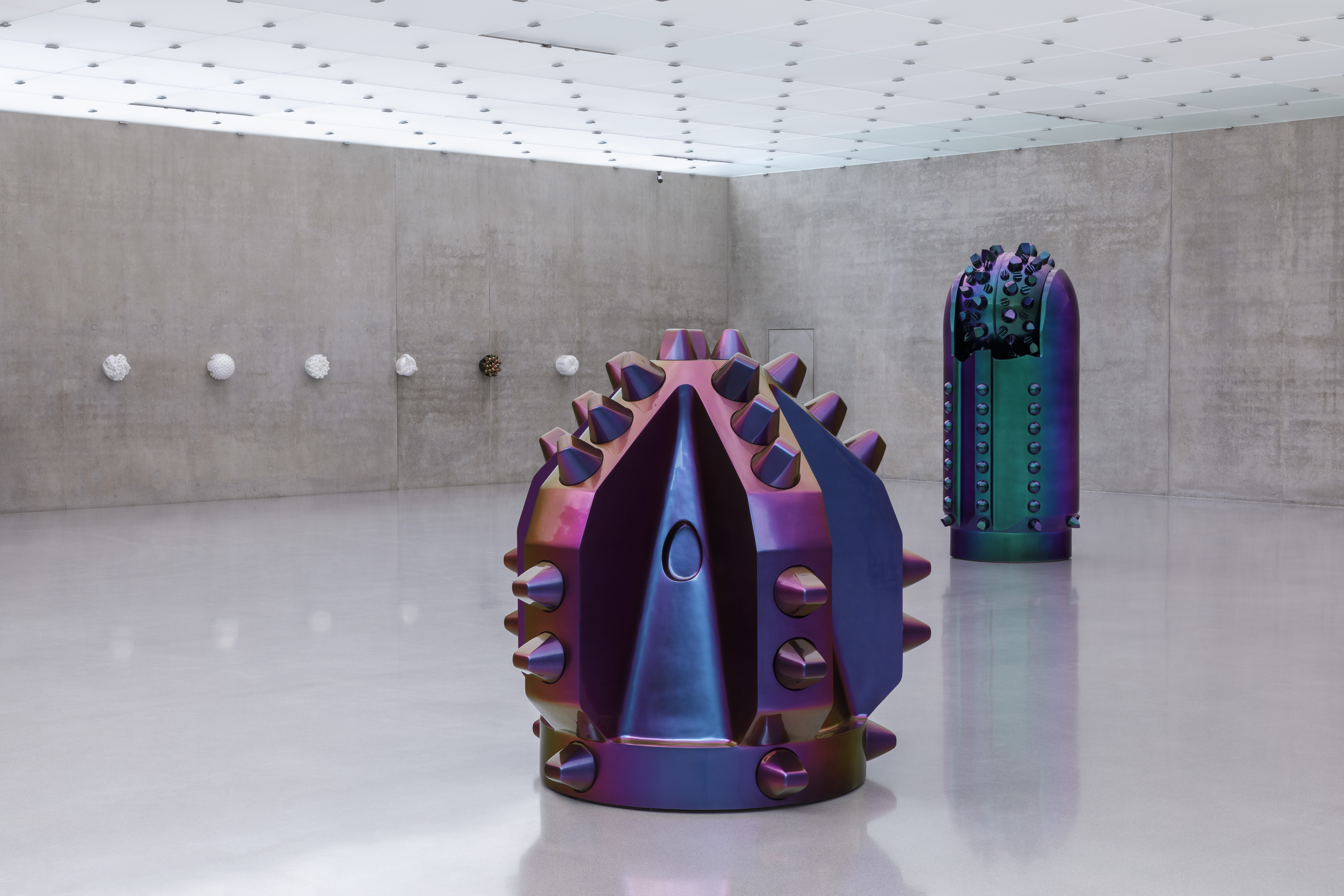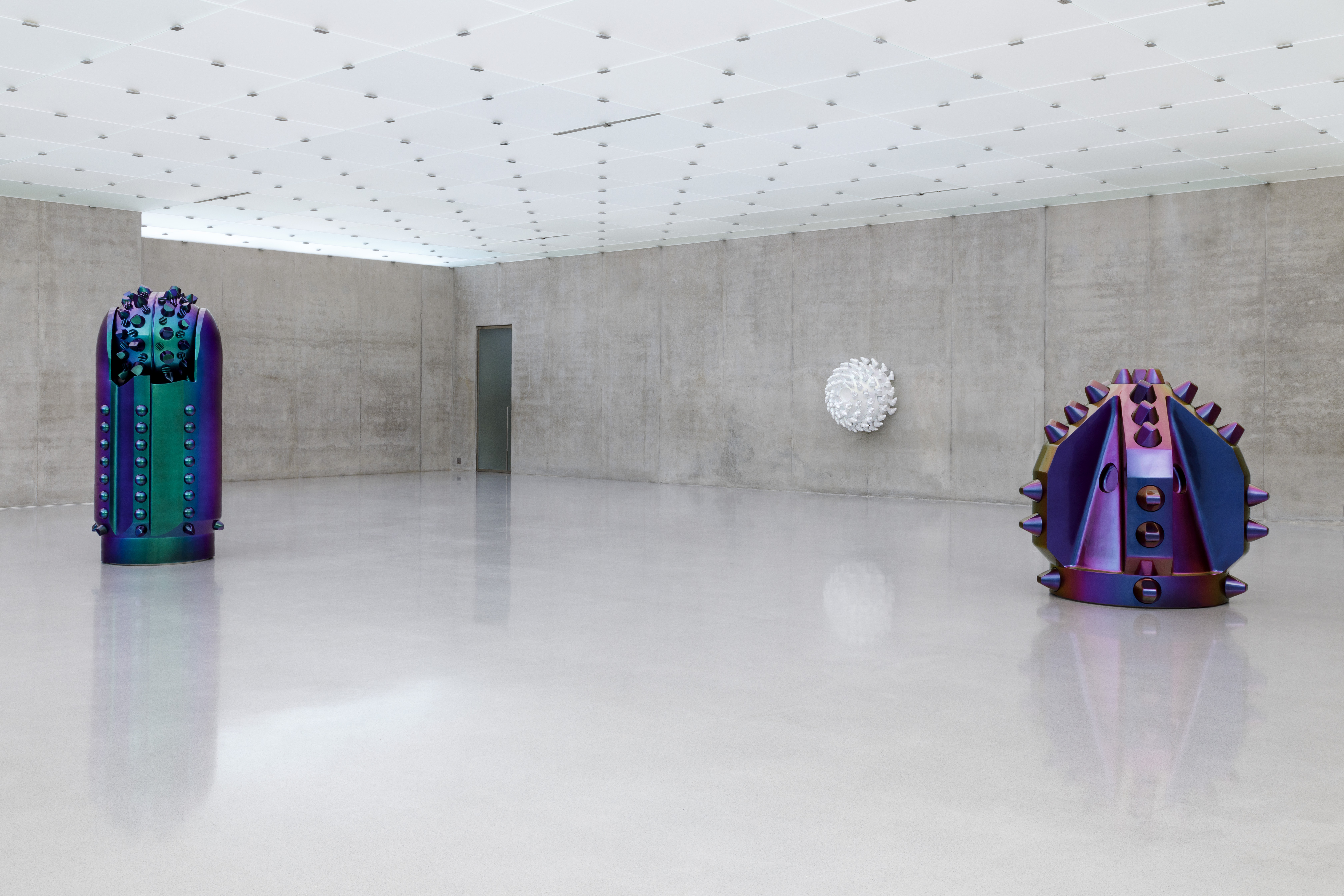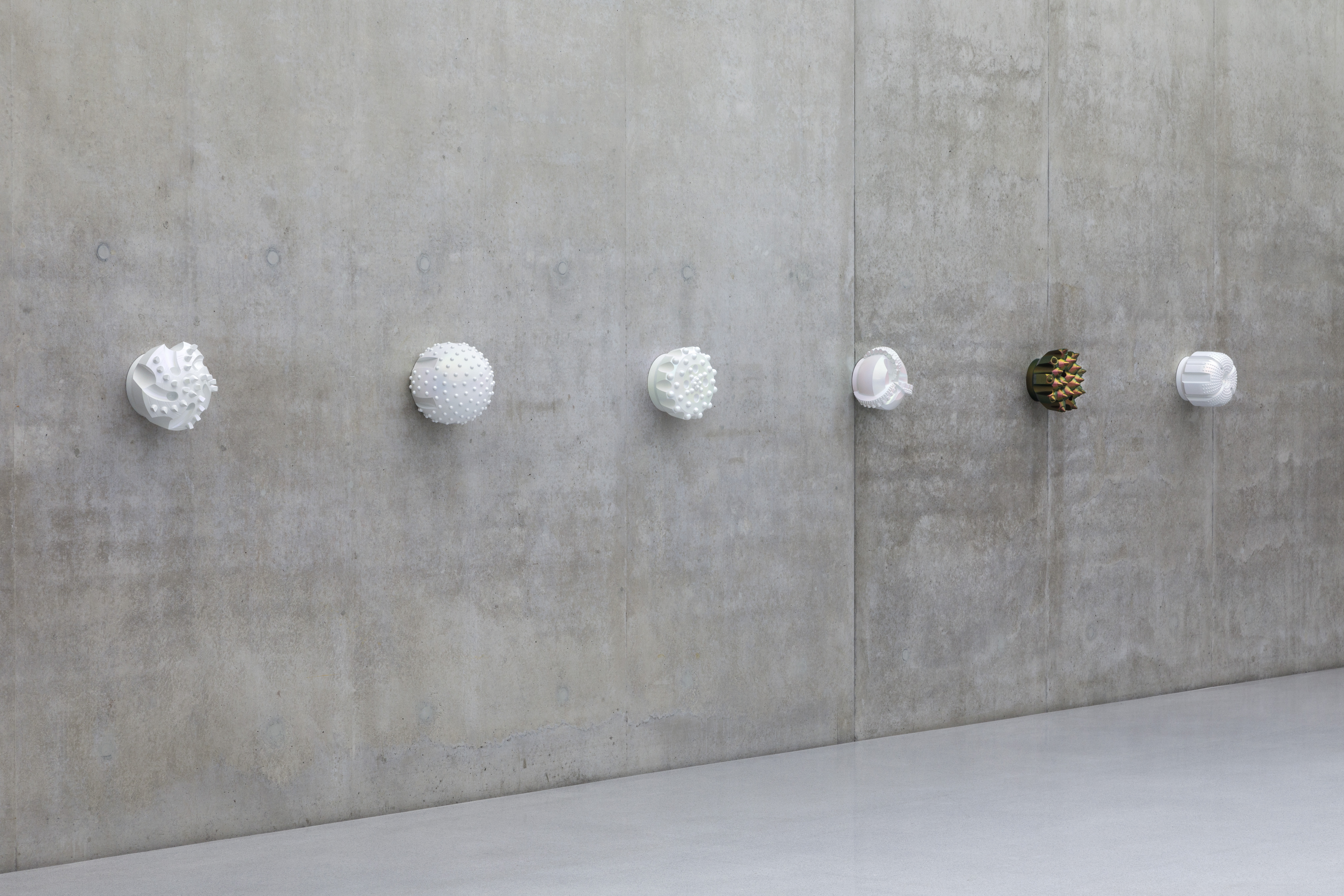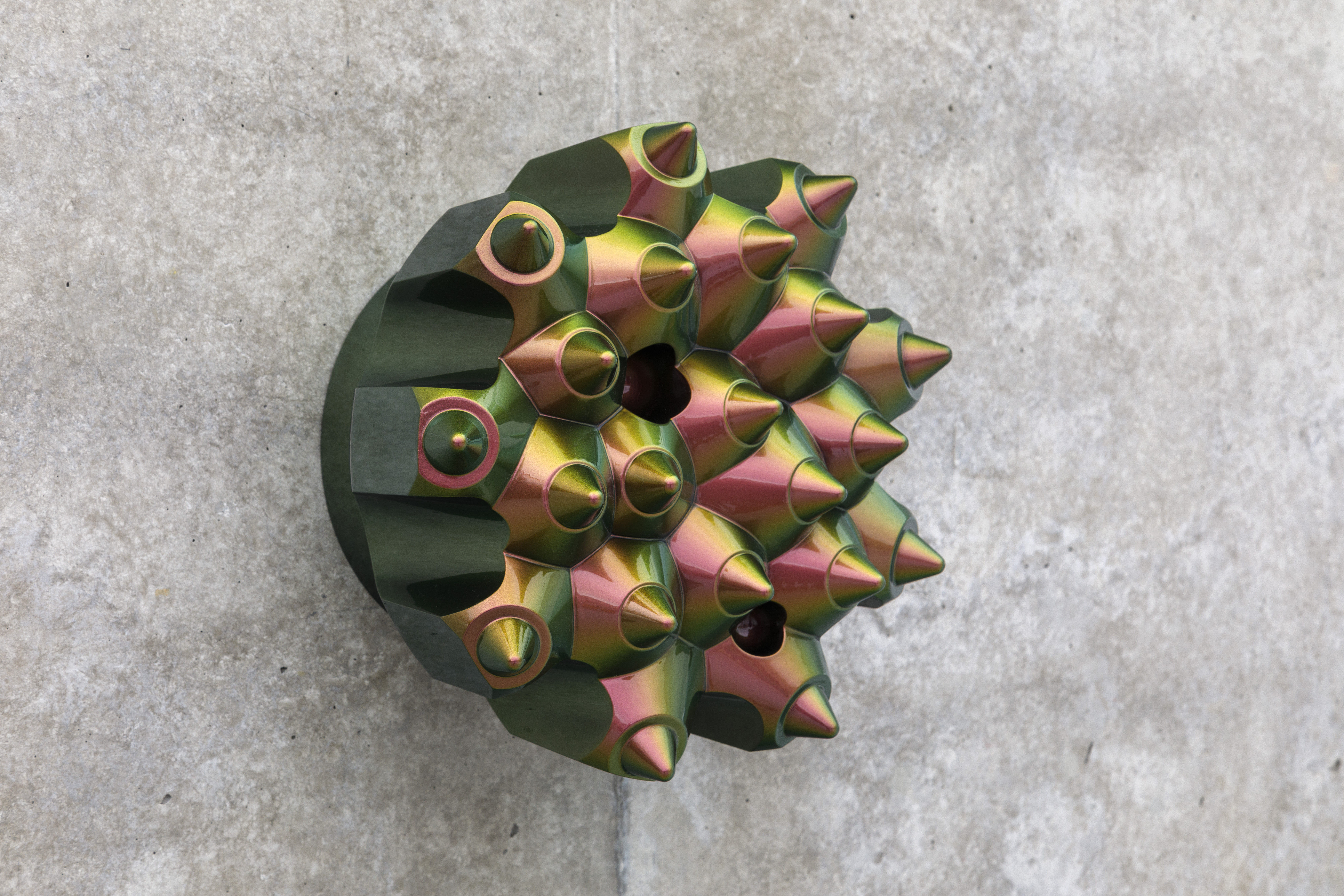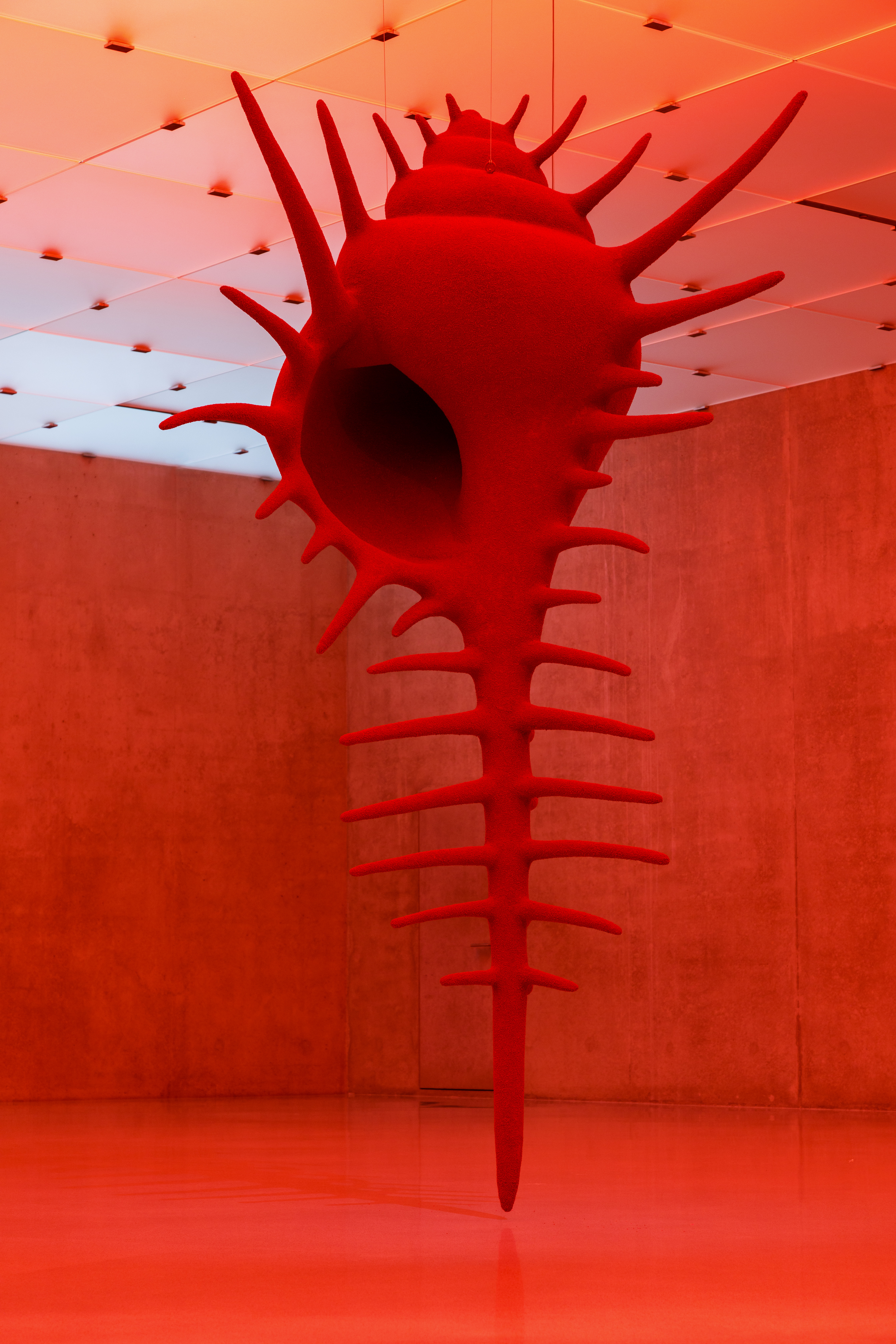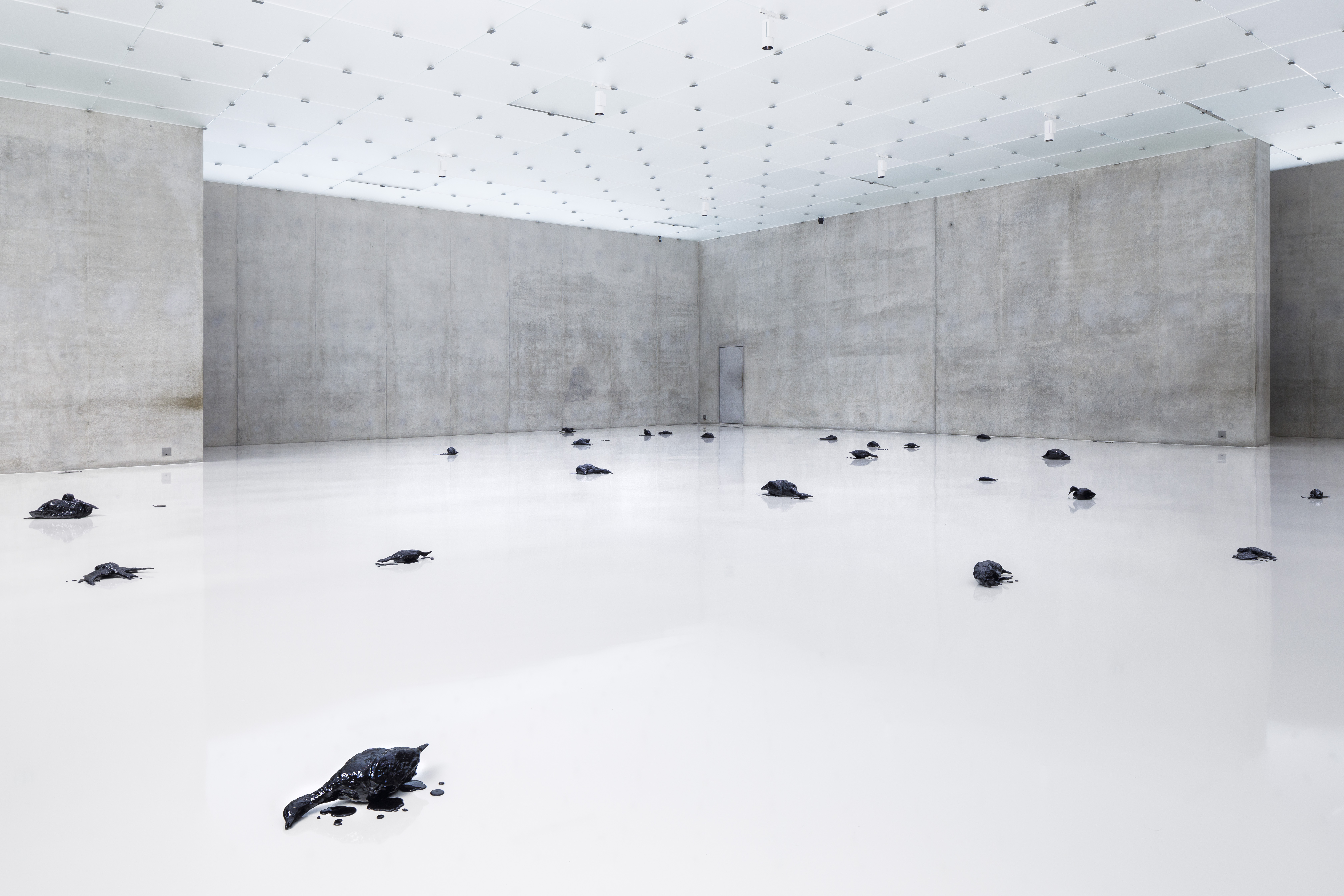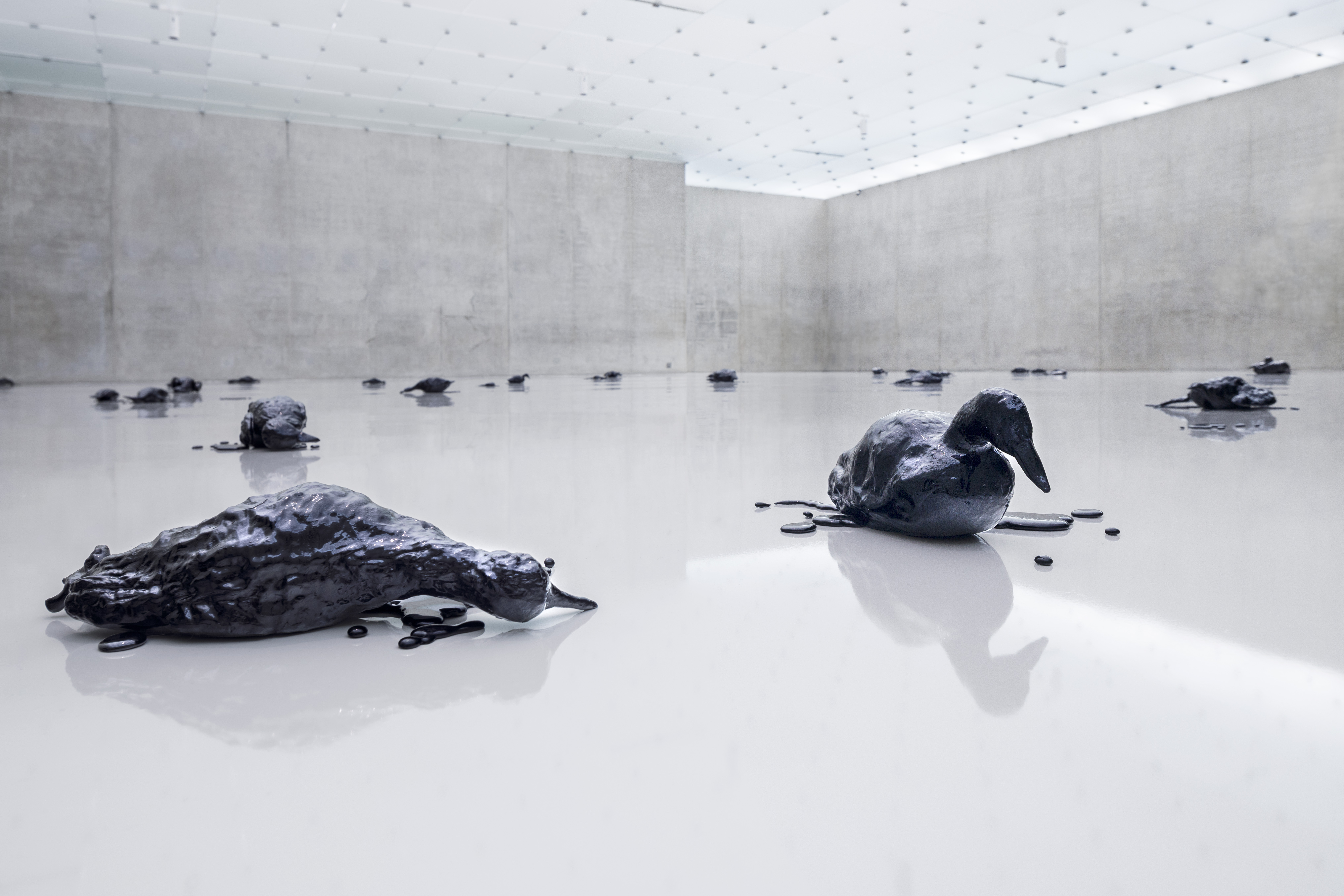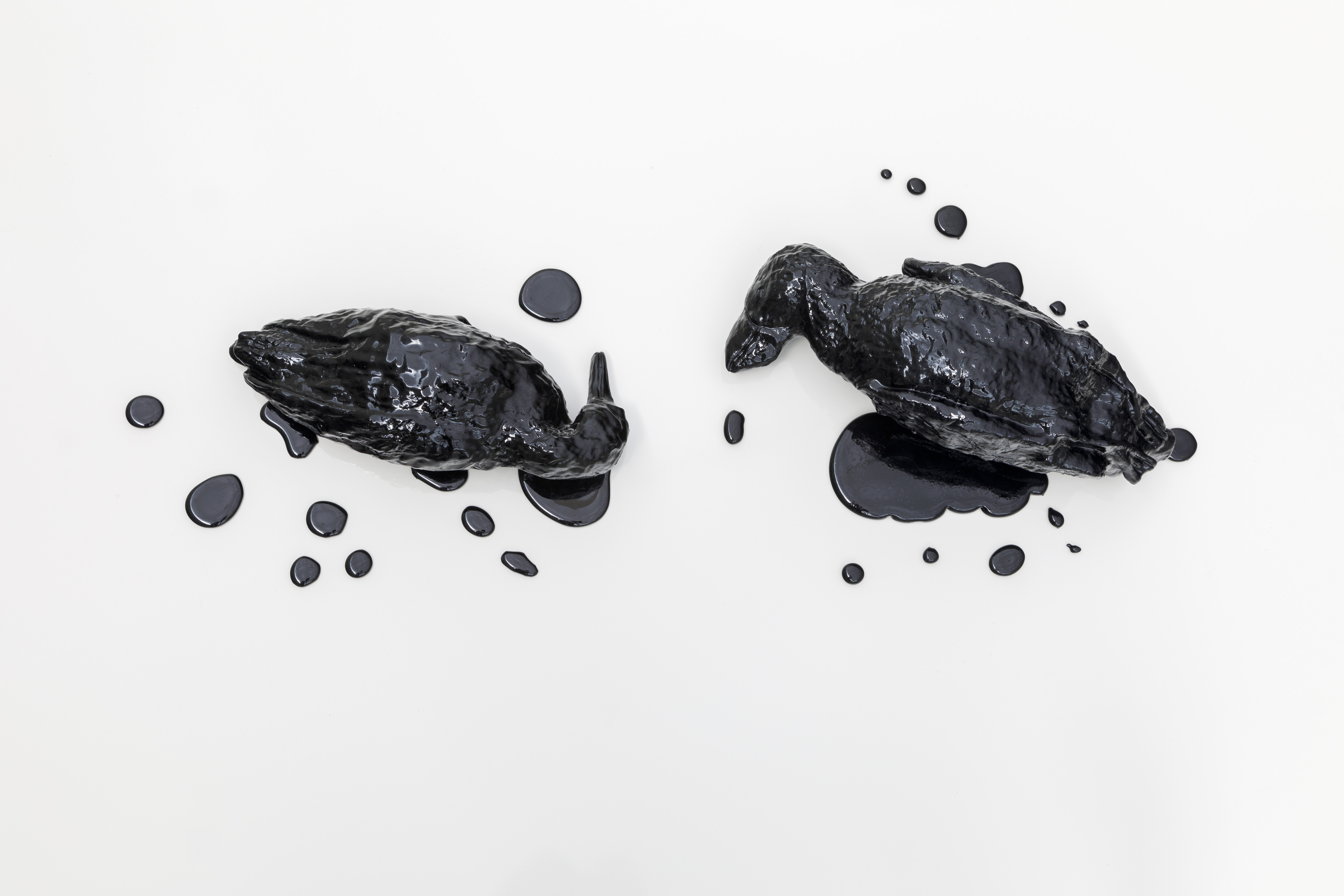Bregenz, Austria
Monira Al Qadiri
solo exhibition
at Kunsthaus Bregenz
21 April – 2 July 2023
Monira Al Qadiri
About the project
rossogranada is proud to support Monira Al Qadiri in her solo exhibition ‘Mutant Passages’ at the renowned Kunsthaus Bregenz in Austria, opening 21st April 2023. This exhibition follows a busy year where Al Qadiri participated at the Venice Biennale in 2022 and was featured in thirteen exhibitions around the world. ‘Mutant Passages’ is primed to be Al Qadiri’s most ambitious show yet, where new work, specifically commissioned for the Kunsthaus, will be on display. The works that are presented act as an extension to the artist’s habitual interdisciplinary approach to installation with a variety of elements fusing sculpture with sound, fragile objects and interactive concept installations.
rossogranada together with the Kunsthaus Bregenz is supporting Al Qadiri with artwork production.
The exhibition will run until 7th July 2023.
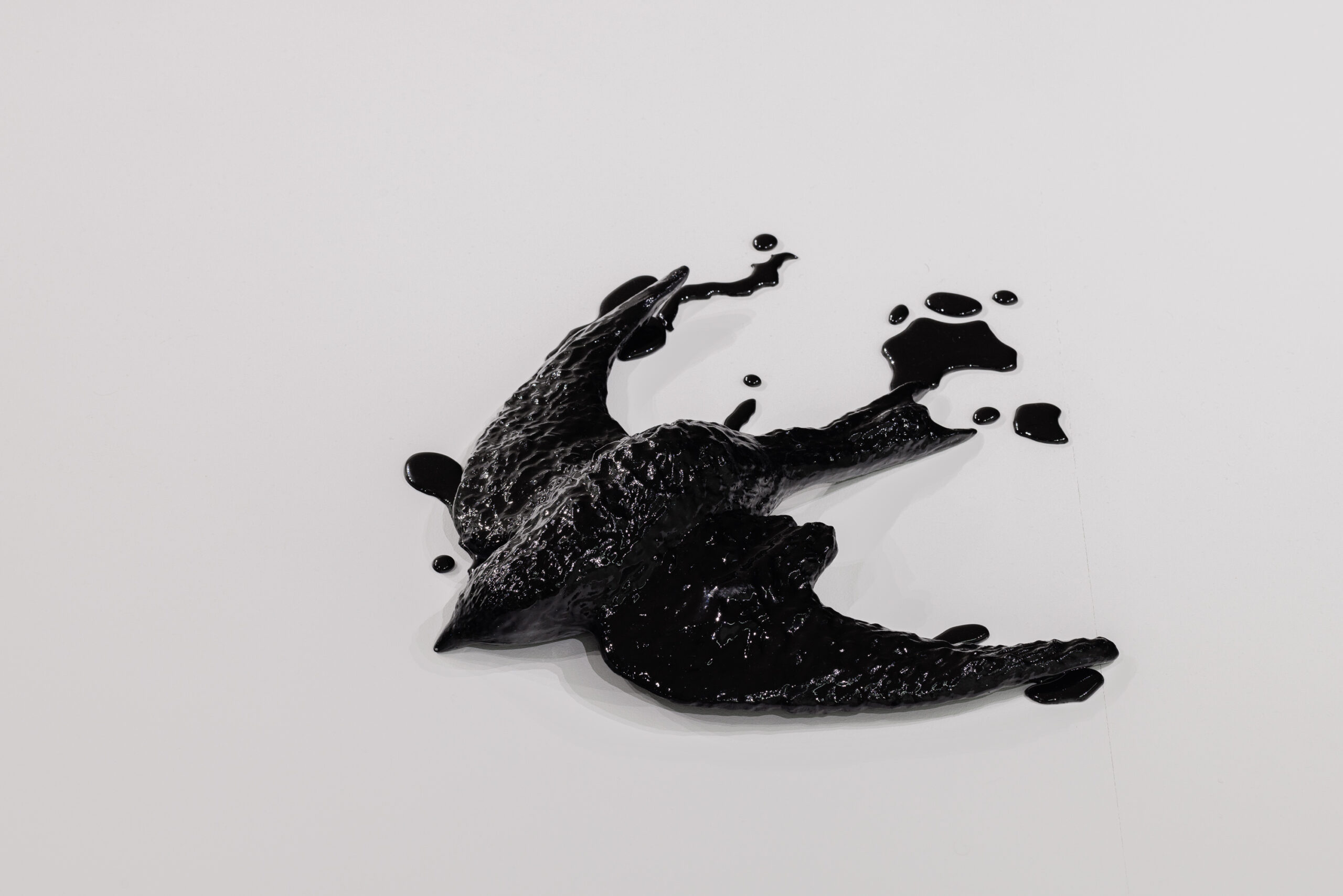
Exhibition: ‘Mutant Passages’
In the foyer, large inflatable sculptures greet us, hovering overhead and within the space, coated in iridescent colorful fabrics. The work Benzene Float depicts scientific drawings (technically named “space-filling models” in chemical terminology) of the molecular structure of benzene, propane gas, naphthalene, and other petrochemical substances. The works’ exaggerated forms amplify their presence in modern society, confronting us with their grasp over our lives.
Monira Al Qadiri. BENZENE FLOAT. Propane; Para-Benzene, 2023. Installation view ground floor Kunsthaus Bregenz, 2023. Produced with the Sponsorship of ICD Brookfield Place. Photo: Markus Tretter. Courtesy of the artist. © Monira Al Qadiri, Kunsthaus Bregenz
Monira Al Qadiri. Choreography of Alien Technology. Installation view first floor Kunsthaus Bregenz, 2023. Photo: Markus Tretter. Courtesy of the artist and König Galerie. © Monira Al Qadiri, Kunsthaus Bregenz
On the first floor, several large-scale sculptures rotate quietly, their iridescent colors shimmering and changing with their movement in space. They resemble some kind of bioluminescent marine life, especially with their recast surfaces, or some futuristic alien. But they are in fact industrial objects: drill bits used to find oil. Their dichroic colors allude to the pearling industry of the Persian Gulf, a forgotten history that has all but disappeared after the discovery of oil in the region. Choreography of Alien Technology aims to bridge the relationship between pearls and oil, through their colors and forms, presenting more vividly the historical gap that oil has created. The iridescent nature of the color reimagines itself as the carrier of wealth, traveling between pearls, oil, or even another future being.
On the second floor, two reddish mirror-imaged sculptures of gastropod seashells stand side by side, speaking to each other. They both have a hollow cavity in the lower half of their bodies, inviting passers-by to press their ears and heads against them, perhaps expecting to hear the sound of rolling ocean waves. Instead, they encounter an unexpected conversation between two androgynous voices, recalling how they had unintentionally changed genders while lying in the ocean. In Gastromancer, the impact the oil industry has on marine life is on display, and not in ways visibly known to us. The reddish biocide paint tributyltin, known as TBT, protects oil tankers from accruing algae, barnacles and mussels (in a process commonly called “anti-fouling”), but it has also caused strange and bizarre changes and contaminations in the natural environment due to its rapid leakage into the water. For example, TBT contamination causes female murex mollusks to change their gender into males, impairing their ability to spawn and devastating gastropod populations.
Monira Al Qadiri. Gastromancer, 2022. Installation view second floor Kunsthaus Bregenz, 2023. Produced with the Sponsorship of Rossogranada AG, Zurich. Photo: Markus Tretter. Courtesy of the artist. © Monira Al Qadiri, Kunsthaus Bregenz
On the third floor, the installation Onus is composed of multiple solid glass sculptures of birds that are dispersed over a white floor. During the Gulf War in Kuwait (1990—91), the carcasses of birds, fish, livestock, and many other animals regularly lined the coastline and deserts of the nation—the result of massive toxic clouds fed by the hundreds of torched oil wells. It was and still is one of the worst man-made environmental disasters of all time. However, when images of these oil-drenched animals were disseminated abroad, many people believed them to be fake.
While studying at university in Japan, the artist was confronted with iconic photographs of oil covered birds taken during the war that were presented during a class as being merely exercises in propaganda. Although a witness to the destruction herself, her lived experience was questioned, and under the influence of others, was even distorted. Through these works, the artist has attempted to breathe life back into her memories by recreating these birds as glass objects, to make both tangible the destruction she witnessed, while demonstrating the fragility of our memories when images move across time, space and cultures. The work conveys the artist’s burden and duty to prove the loss that has been suffered.
Monira Al Qadiri, Onus, 2023. Installation view third floor Kunsthaus Bregenz, 2023. Photo: Markus Tretter. Courtesy of the artist and König Galerie. © Monira Al Qadiri, Kunsthaus Bregenz
About the artist
Monira Al Qadiri (b. 1983) is a Kuwaiti visual artist born in Senegal and educated in Japan. Spanning sculpture, installation, film, and performance, Al Qadiri’s multifaceted practice is based on research into the cultural histories of the Gulf region. Her interpretation of the Gulf’s so-called “petro-culture” is manifested through speculative scenarios that take inspiration from science fiction, autobiography, traditional practices and pop culture, resulting in uncanny and covertly subversive works that destabilize mythologies of statecraft and modernization as well as traditional notions of gender. Tracing the delicate ecologies threatened by the petroleum industry’s relentless resource extraction, Al Qadiri’s works envision a world in which oil is a relic of humanity’s past. She is currently based in Berlin.
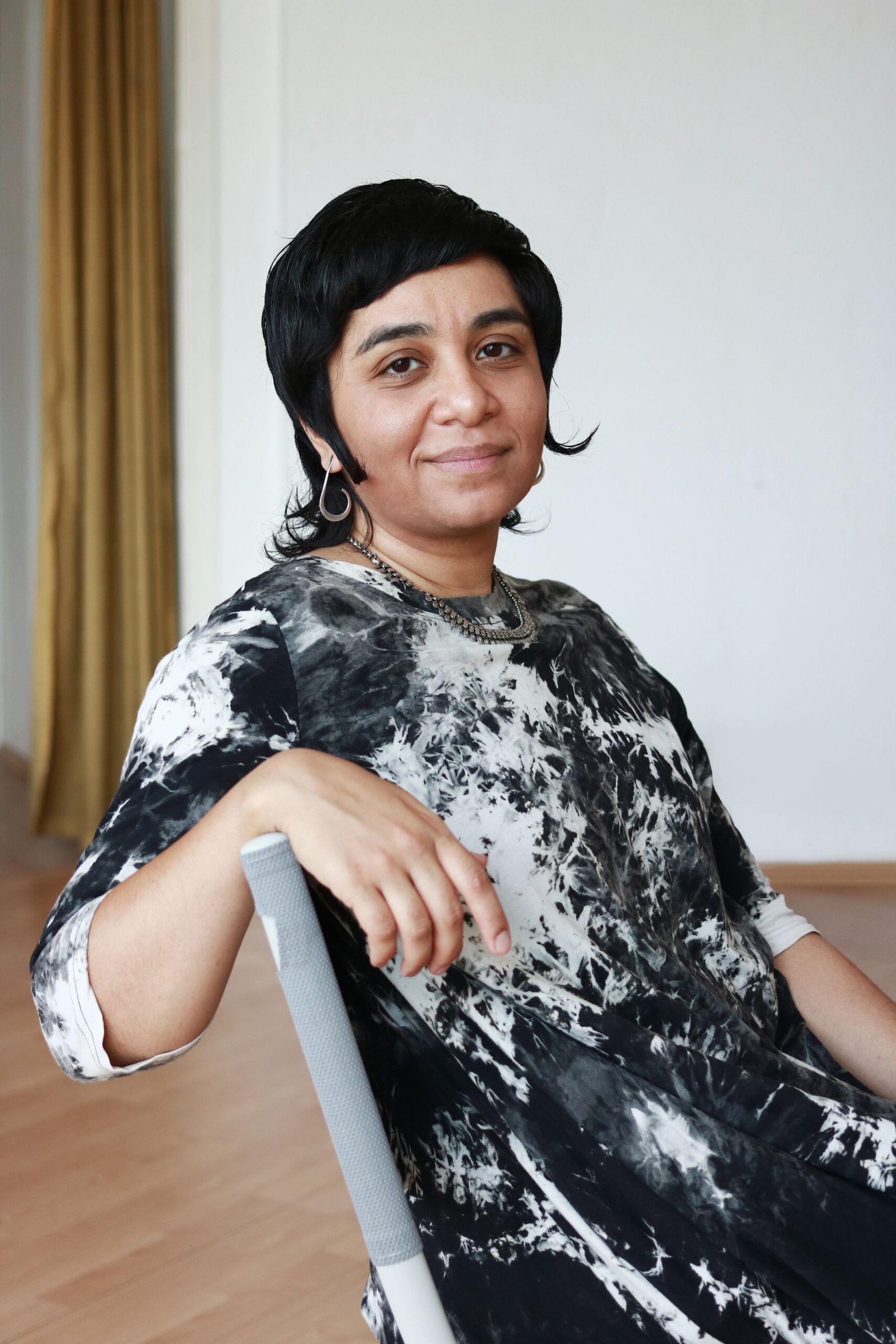
Monira Al Qadiri has held solo exhibitions at the Guggenheim Museum Bilbao (2022), Blaffer Art Museum (2022), Haus der Kunst, Munich (2020), Kunstverein Gottingen, Gottingen (2019), The CIRCL Pavilion, Amsterdam (2018), Sursock Museum, Beirut (2017), Gasworks, London (2017), Stroom Den Haag, the Hague (2017), and Sultan Gallery, Kuwait (2014). Her participation in collective exhibitions includes: “Is it Morning for You Yet?” The 58th Carnegie International, Pittsburgh (2022), “The Vibration of Things” The 15th Triennial of Small Sculpture, Fellbach (2022), Dubai Expo 2020, Dubai (2021), “Feeling the Stones” Diriyah Contemporary Art Biennial, Riyadh (2021), “Phantasmapolis” Asia Art Biennial, Taiwan (2021), “Our World is Burning” Palais de Tokyo, Paris (2020), “Theater of Operations: The Gulf Wars” MoMA PS1, New York (2019-20), Future Generation Art Prize, Kiev (2019), “Antikino” Berlinale Forum Expanded, Berlin (2019), Asia Pacific Triennial, Brisbane (2018), Lulea Biennial, Sweden (2018), Athens Biennial, Athens (2018), “Crude” Jameel Arts Center, Dubai (2018), among others. In 2022, Al Qadiri was featured in the Venice Biennale’s central exhibition “The Milk of Dreams.”
About the Kunsthaus Bregenz
“Kunsthaus Bregenz is an institute for the presentation of outstanding contemporary art that is active internationally. Thanks to its ambitious exhibition program and its unique architecture, the KUB is also internationally renowned amongst aficionados of both art and architecture. It was designed by the Swiss architect Peter Zumthor on behalf of the Austrian Federal State of Vorarlberg and was constructed between 1990 and 1997. Peter Zumthor won the Mies van der Rohe Award for European Architecture in 1998 for the Kunsthaus. In 2009, he was honored with the Pritzker Prize, the most prestigious award for architects.
Artists are invited to respond to the building’s architecture or to even enter into a symbiosis with it. For this reason, a large part of the work on display has been created on site and especially for the institution. Kunsthaus Bregenz’s exhibitions and projects enable artists’ ideas to become reality. The boundaries of both what is feasible and imaginable continually shift with each exhibition. Precisely executed projects evolve from the artists’ initial visions – rough, hand drawn sketches or small-scale models. Such projects are only possible thanks to collaborations involving mutual trust between the technical team, the artist, and curator, as well as the entire staff at the Kunsthaus. This also involves the artists working closely with partners from local industries as well as small-scale handcraft businesses. The exceptionally high quality and flexibility of Vorarlberg businesses has been repeatedly praised by invited artists.”
Thomas D. Trummer heads the Kunsthaus and is the curator of the upcoming Al Qadiri monograph show.
